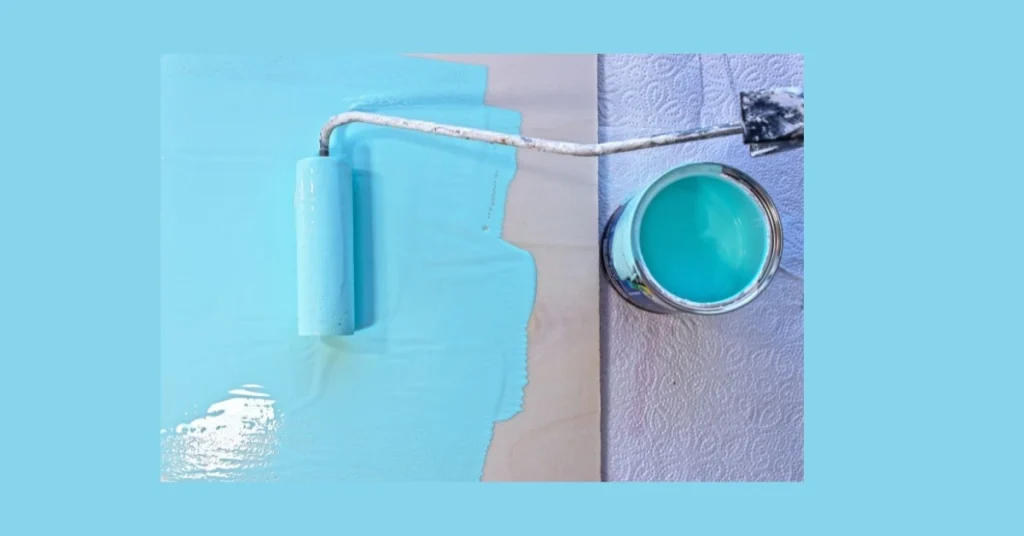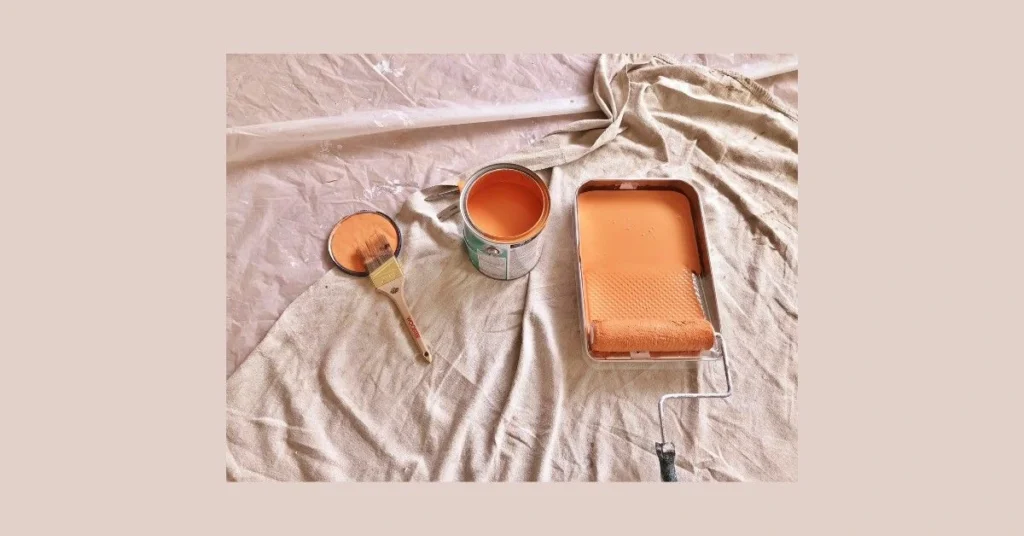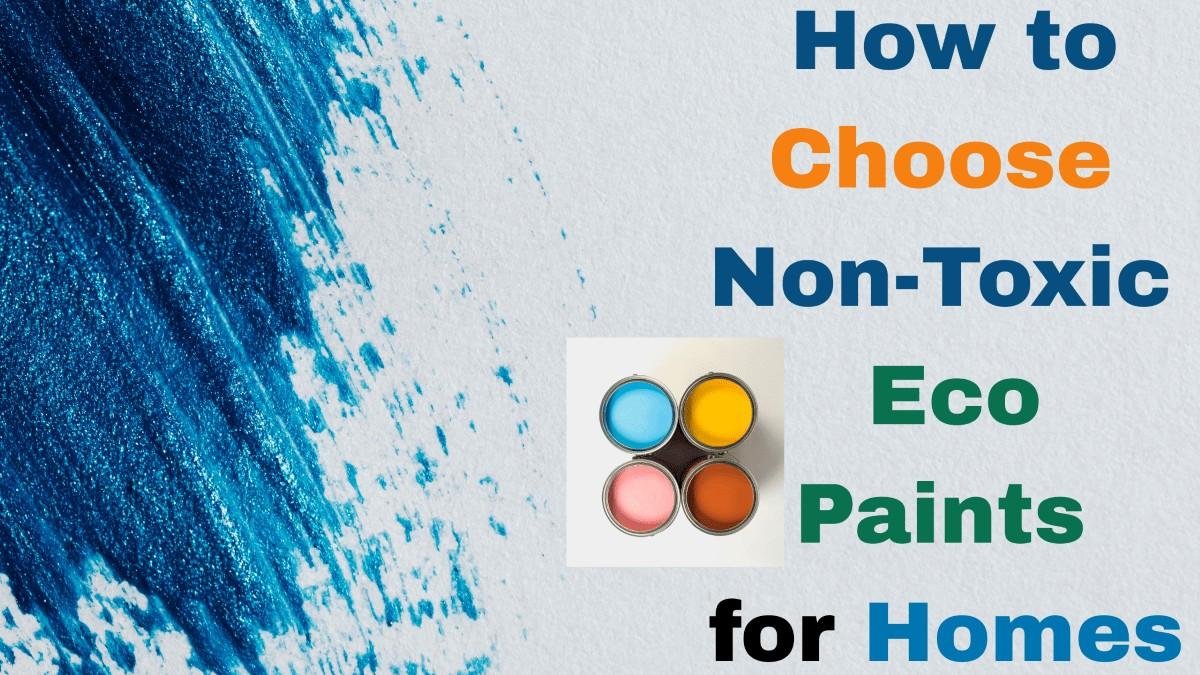Decorating your home is a personal experience. Every shade, texture, and wall colour reflects our style and values. But if you want your home to be not only beautiful, but also safe and eco-friendly, making smart decisions in paint selection is also important.
In 2025, as more people take their health and environment seriously, the trend of non-toxic eco paints has also become quite popular. Whether you are renovating a room or the entire house, choosing the right paint is very important for indoor air quality and overall health.
Table of Contents
Why are non-toxic paints important?
Traditional paints contain VOCs (Volatile Organic Compounds). When these paints dry, these chemicals are released into the air that deteriorate indoor air quality.
The result? Headaches, allergies, breathing issues, and long-term health risks. Using non-toxic and VOC-free paints can help keep your home environment clean and safe, especially if you have small children, seniors, or pets in the home.
How to Identify Non-Toxic and Eco-Friendly Paints?
When buying paint, don’t just focus on the color. Also, pay attention to the ingredients and certifications written on the label:
- Zero/Low VOCs: Zero VOC paints have VOCs less than 5 grams/litre. Low VOC paints have less than 50 grams/litre.
- Natural Ingredients: Ingredients like clay, chalk, plant-based oils, beeswax or milk-based casein are safe and biodegradable.
- Water-Based Formula: Such paints are solvent-free and have very little smell.
- Certifications, such as GreenGuard, Green Seal, or India’s EcoMark label, demonstrate the authenticity of the paint.

Which type of Eco Paint should I choose?
There are many types of sustainable wall colour options available in the market.
Choose according to your project:
- Natural Paints: Paints made from clay, lime, or natural oils. These are biodegradable and safe for sensitive skin.
- Milk Paints: These are perfect for furniture and wooden surfaces. These contain milk protein (casein).
- Recycled Paints: Waste paint is collected and processed to make it, which is budget-friendly as well as environmentally friendly.
- Low VOC Acrylics: Along with a modern look, you also get water-based safety.
Read Also – Eco-Friendly Home Decor Ideas in 2025
How to Read Paint Labels and Certifications?
Not every paint labeled “natural” or “eco” is truly safe. Be sure to check out these trusted certifications:
- Green Seal – follows strict environmental standards.
- Greenguard Gold – guarantees low chemical emissions.
- LEED Compatible – suitable for sustainable construction projects.
- EcoMark (India) – India’s environmental safety approval mark.
Top Brands That Offer Non-Toxic Eco Paints
These are some popular and trusted brands that you can consider in 2025:
- ECOS Paints – USA based, completely VOC-free and odourless.
- Clare Paint – Designer shades with zero VOC and recycled packaging.
- The Real Milk Paint Co. – Natural paint option for furniture.
- Asian Paints Royale Atmos – India’s trusted brand with low VOC + air-purifying properties.
- Nippon Paint Odour-Less AirCare – For low smell and healthy indoor air.
- Backdrop – Climate-neutral process and recyclable cans.
- Graham & Brown – UK based, water-based paints with wide colour range.

Ingredients That Make Paint Eco-Friendly
When you choose non-toxic eco paints, keeping an eye on the ingredients is a smart move. Here are some natural components you should look at:
- Clay – Provides earthy texture and matte finish.
- Chalk & Talcum – Enhance the thickness and texture
- Beeswax – Used for polish and water-resistance
- Casein (milk protein) – Old-school but effective binder
- Citrus oils & plant resins – Provide durability and natural scent
- Natural pigments – Derived from earth and minerals
These ingredients are biodegradable, safe, and great for indoor air quality. Also, natural paints usually have a pleasant, mild scent, unlike the strong chemical smell of regular paints.
Top Painting Tips for an Eco-Friendly Home

Non-toxic eco paints have been chosen, now what? Make sure you follow these eco-friendly painting tips:
- Ventilate your space well – Open windows and use fans to keep air circulating.
- Use sustainable brushes & rollers – Look for bamboo handles, recycled materials, or biodegradable options.
- Buy only what you need – Use online paint calculators to estimate exact quantity.
- Store properly – Reseal lids tightly and store in cool, dry places to avoid waste.
- Dispose responsibly – Never pour leftover paint into drains. Contact local recycling centres.
Small efforts like these make a big difference in reducing your project’s environmental impact.
Color Selection
Choosing the right colors can enhance the beauty of your home and create a nice atmosphere. Non-toxic paints come in many colors, allowing you to pick vibrant options without health risks.
- A shade of paint is not just about aesthetics; it can also impact your mood, energy usage, and the eco-friendliness of your room.
- Lighter colors like white, pastel blue, and cream reflect light better and reduce electricity usage during the day.
- Earthy tones like terracotta, sand, olive green create a natural vibe and complement wood furniture and indoor plants.
When choosing colors, think about how natural light will affect your space and how your choices will fit into your overall design. Choose colors that promote calmness and creativity, making your home inviting.

Use of Non-Toxic Paints Improves Indoor Air Quality
When you use non-toxic eco paints, the indoor air automatically becomes safer. Studies have proven that both productivity and concentration improve in low-VOC environments.
According to one study, when people work in a low-VOC workspace, their cognitive performance improves by more than 100%. This benefit is costless for the home as well, especially if your home is a work-from-home setup.
Read Also – To improve Indoor Air Quality : 14 Best Air-Purifying Indoor Plants for a Healthier Home
Some Common Myths About Eco-Friendly Paints
“Eco paints are expensive.”
Today, eco paints cost the same as traditional paints. In the long term, they offer health and maintenance benefits.
“Eco paints have limited colors.”
Not at all. Brands like ECOS and Clare offer 1000+ color options.
“Durability is low.”
Modern eco paints are highly durable—you just need to apply them correctly.
Conclusion
Everyone wants their home to be beautiful, but if you can also make it healthy and environmentally friendly, why not? With non-toxic eco paints, VOC-free paints, and organic wall coatings, you can create a stylish and sustainable home.
So next time you choose paint for your home, remember it is not just about how the wall looks but also how the space feels.
Switching to VOC-free paints and organic wall coatings is not about being trendy. It is about creating a safer, healthier, and more mindful space for yourself and your family. In 2025, we all deserve to breathe cleaner indoor air and do our bit for the planet, even if it is through something as simple as choosing the right paint.
FAQs
What is non-toxic paint?
Non-toxic paints are paints that contain very little or no harmful chemicals, such as VOCs (Volatile Organic Compounds). These paints do not harm the indoor air quality and are health-friendly, especially for children, elders, and pets.
What does VOC-free paint mean?
VOC-free paint means that the volatile organic compounds in that paint are either zero or very little (less than 5 g/litre). This type of paint is environment-friendly and also has a mild smell.
Which paint brand is the best in India that is eco-friendly?
In India, Asian Paints Royale Atmos and Nippon Paint Odour-less AirCare are both popular non-toxic paint options. Both are low VOC and come with indoor air purifying properties.
Are there fewer shades in eco-friendly paints?
No, nowadays there are 1000+ shade options available in eco-friendly paints. Brands like Clare, ECOS, and Backdrop offer a wide range of colours that are as stylish as traditional paints.
Are eco paints more expensive than normal paints?
The starting cost can be a little high, but in the long term these are more beneficial because there is less need for repainting and health and air quality also remain safe.


1 thought on “How to Choose Non-Toxic Eco Paints for Homes in 2025”